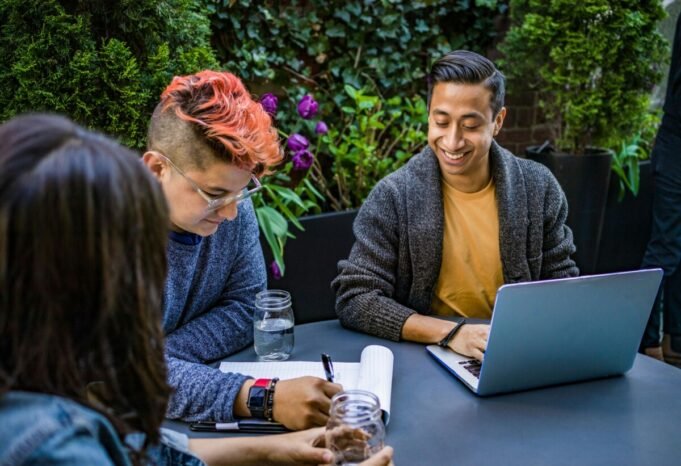Exclusive streetwear releases and limited edition collaborations have become an integral part of street culture and fashion. The allure of limited availability and access fuels hype and demand among enthusiasts who covet the status and individuality these pieces confer. In recent years, luxury brands have also tapped into streetwear collaborations, fusing high fashion with urban edge and reaching new demographics. This symbiotic relationship has elevated streetwear to unprecedented heights, cementing its place in the fashion industry.
The Allure of Exclusive Streetwear Releases
Exclusive streetwear releases play an important role in driving hype and demand within streetwear culture. Unlike widely distributed general releases, exclusive releases are available in limited quantities, at select retailers or brand events. The intentional scarcity imbues these pieces with an aura of uniqueness and prestige.
Owning an exclusive piece signifies being “in the know” and conveys status as an early adopter within a brand’s inner circle. As streetwear historian Elizabeth Semmelhack notes, “Exclusivity is part of the DNA of streetwear.” The difficulty in procuring these limited edition pieces also adds to their appeal. Standing in long queues and entering raffles offers a sense of communal experience and achievement for those who finally secure their coveted item.
This was evident with Nike’s limited-edition SB Dunk Low “Paris” release, which saw lines stretching multiple city blocks. The frenzy surrounding exclusive sneaker releases like the SB Dunks taps into the human psyche. As psychologist Dr. Margo Jackson explains, “Limited availability items take on an elevated value and desirability.” By leveraging exclusivity, streetwear brands create cultural moments that capture attention and drive brand buzz.
Limited Edition Streetwear: A Badge of Honor
Limited edition items have an undeniable allure for collectors and streetwear enthusiasts. Pieces released in capsules, small batches or exclusive colorways offer the satisfaction of owning something rare. Limited edition streetwear bestows a sense of honor and personal identity that mass-produced goods cannot.
To maintain scarcity, brands employ strategic tactics. Japanese streetwear label A Bathing Ape pioneered the model of releasing limited quantities per colorway. Other brands hype releases through encrypted announcements or surprise drops. By withholding extensive details and availability, they sustain excitement. According to streetwear reseller Justin Reed, “The beauty of limited releases is that brands control the narrative. They drop crumbs to keep you guessing.” This intentional unpredictability and secrecy keeps consumers engaged.
For streetwear devotees, limited edition pieces also symbolize being part of a select tribe. As collector Maurice Malone says, “Every time I wear one of my rare Supreme box logo tees, it’s my way of representing what I’m into, like my membership badge.” The exclusivity conveys insider status in the streetwear world. Limited drops have also birthed vibrant resell communities, where coveted pieces command premiums. Ownership serves as social currency and a flexing of style credentials.
Powerhouse Collaborations: Elevating Streetwear to New Heights
The streetwear industry has been transformed by high-profile collaborations between brands, designers, celebrities and artists. These cross-pollinations allow brands to merge their distinctive strengths and aesthetics to create something entirely new. When done successfully, collaborations become cultural landmarks, amplifying awareness and prestige.
One of the earliest streetwear collaborations was the 1982 partnership between sportswear brand adidas and emerging hip-hop group Run-D.M.C. By combining adidas’ shoe-making expertise with Run-D.M.C.’s cultural influence, they cemented the iconic status of the Superstar sneaker on the streets and in the music industry. This interplay between brands and pop culture has continued to thrive.
In 2016, Louis Vuitton’s Supreme collaboration marked a major collision between luxury fashion and streetwear. The release generated over $1 million in sales within minutes, demonstrating the commercial potential of fusing high-end with urban style. Beyoncé’s Ivy Park activewear in collaboration with Adidas also blended celebrity marketing power with sportswear innovation.
For smaller brands, these joint ventures can provide increased visibility and credibility. By partnering with streetwear heavyweights like Stussy and BAPE, labels can gain access to new audiences. When executed thoughtfully, collaborations enable brands to expand their reach and pioneer new territory in the marketplace.
Luxury Streetwear Collaborations: A Fusion of High-End and Street
In recent years, luxury houses have embraced collaborations with streetwear brands, merging high fashion with urban sensibilities. Many credit Virgil Abloh’s appointment as Louis Vuitton’s menswear artistic director in 2018 as ushering in a new era. Abloh’s background as founder of streetwear label Off-White enabled him to fuse his urban aesthetic with Louis Vuitton’s legacy.
This bridging between the worlds of luxury and streetwear reflects changing mindsets. Younger generations of luxury consumers are more receptive to urban references and graphic-driven designs. As highlighted by fashion journalist Osman Ahmed, “Streetwear codes have been so widely adopted that they are no longer perceived as casual or juvenile.”
Luxury streetwear collaborations also allow brands to attract new demographics. Champion’s 2021 collaboration with high-end brand Miu Miu reinterpreted the sportswear label’s basics through a high fashion lens. Their co-branded items styled with Miu Miu mini-skirts demonstrated Champion’s versatility for both street and runway.
These partnerships work best when the collaborators have complementary strengths. Outdoor Voices activewear teamed up with Aimé Leon Dore in 2022, combining the technical innovation of the former with the preppy aesthetic of the latter. When thoughtfully executed, these luxury streetwear mashups can elevate both brands and expand their markets.
Conclusion
Exclusive releases and limited collaborations have become ingrained in streetwear culture. Leveraging scarcity and unconventional partnerships, brands have redefined hype marketing and demand creation. Owning exclusive pieces confers status and belonging to a select tribe of enthusiasts. When executed authentically, collaborations between streetwear and luxury can produce items that uniquely capture the zeitgeist. As streetwear continues to evolve, exclusive releases and groundbreaking collaborations will remain instrumental in shaping its future. The synergy between brands and designers will continue to push boundaries and redefine the limits of street fashion.




































